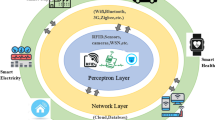Abstract
A Wireless Mesh Network (WMN) is a promising way of providing low-cost broadband Internet access. The underlying routing protocol naively assumes that all the nodes in the network are non-malicious. The open architecture of WMN, multi-hop nature of communication, different management styles, and wireless communication paves way to malicious attackers. The attackers can exploit hidden loopholes in the multipath mesh routing protocol to have a suction attack called the blackhole attack. The attacker can falsify routing metrics such as the shortest transmission time to reach any destination and thereby suck the network traffic.
We propose a novel strategy by employing mobile honeypot agents that utilize their topological knowledge and detect such spurious route advertisements. They are deployed as roaming software agents that tour the network and lure attackers by sending route request advertisements. We collect valuable information on attacker’s strategy from the intrusion logs gathered at a given honeypot. We finally evaluate the effectiveness of the proposed architecture using simulation in ns-2.
Similar content being viewed by others
References
Agrawal DP, Zeng Q-A (2006) Introduction to wireless and mobile networks, 2nd edn. Brookes Cole Publishing, Pacific Grove
Akyildiz IF, Wang X (2005) A survey on Wireless Mesh Networks. IEEE Commun Mag (Sept)
Ben Salem N, Hubaux JP (2006) Securing Wireless Mesh Networks. IEEE Wirel Commun (Apr)
Bhargava S, Agrawal DP (2001) Security enhancements in AODV protocol for wireless ad hoc networks. In: IEEE vehicular technology conference, VTS 54th, vol 4, pp 2143–2147
Campista MEM, Esposito PM, Moraes IM, Costa LHMK, Duarte OCMM, Passos DG, Albuquereque CVN, Saade DCM, Rubistein MG (2008) Routing metrics and protocols for Wireless Mesh Networks. IEEE Commun Mag 22(1):6–12
Cordeiro C, Agrawal DP (2006) Ad hoc and sensor networks: theory and application. World Scientific, Singapore
Deng H, Li W, Agrawal DP (2002) Routing security in wireless ad hoc network. IEEE Commun Mag 40(10)
http://www.earthlink.net (2011)
Hu Y, Perrig A, Johnson DB (2002) Ariadne: a secure on-demand routing protocol for ad hoc networks. In: Proc of ACM Mobicom, pp 12–23
Hu Y, Johnson DB, Perrig A (2003) SEAD: secure efficient distance vector routing for mobile wireless ad hoc networks. Ad Hoc Netw 175–192
Huang Y-A, Lee W (2003) A cooperative intrusion detection system for ad hoc networks. In: Proceedings of 1st ACM workshop on ad hoc and sensor networks, pp 135–147
Karakehayov Z (2007) Security–lifetime tradeoffs for wireless sensor networks. In: Emerging technologies & Factory automation, ETFA, IEEE, Sept 2007, pp 246–250
Karlof C, Wagner D (2003) Secure routing in wireless sensor networks: attacks and countermeasures. In: First IEEE international workshop on sensor network protocols and applications (SNPA 03), May 2003, pp 113–127
Khattab S, Melhem R, Mosse D, Znati T (2006) Honeypot back-propagation for mitigating spoofing distributed Denial-of-service attacks. J Parallel Distrib Comput 66:1152–1164
Nandiraju D (2009) Efficient traffic diversion and load balancing in wireless mesh networks. Ph.D. Dissertation, University of Cincinnati
Nandiraju N, Nandiraju D, Santhanam L, He B, Wang J, Agrawal DP (2007) Wireless mesh networks: current challenges and future directions of web-in-the-sky. IEEE Commun Mag 14(4):2–12
Network Simulator (NS-2) (2011) http://www.isi.edu/nsnam/ns/index.html
Ning P, Sun K (2005) How to misuse AODV: a case study of insider attacks against mobile ad hoc routing protocols. Ad Hoc Netw 3(6):795–819
Ramaswamy S, Fu H, Sreekantaradhya M, Dixon J, Nygard K (2003) Prevention of cooperative black hole attack in wireless ad hoc networks. In: Proceedings of the international conference on wireless networks, June 2003
Ruiz J-C, Friginal J, Andres D, Gil P (2011) Blackhole attack injection in ad hoc networks. In: Fault tolerance systems group (GSTF). http://www.ece.cmu.edu/~koopman/dsn08/fastabs/dsn08fastabs_ruiz.pdf
Santhanam L (2008) Integrated security architecture for Wireless Mesh Networks. Ph.D. Dissertation, University of Cincinnati, Mar 2008
Santhanam L, Mukherjee A, Bhatnagar R, Agrawal DP (2007) A perceptron based classifier for detecting malicious route floods in Wireless Mesh Networks. In: 3rd Intl conference on wireless and mobile communications, Guadeloupe, French Caribbean, 4–9 March, 2007
Santhanam L, Nandiraju N, Yoo Y, Agrawal DP (2006) Distributed self-policing architecture for fostering node cooperation in Wireless Mesh Networks. In: Personal wireless communication, Sept 20–22, Spain. Lecture notes in computer science, vol 4217/2006. Springer, Berlin, pp 147–158
Shurman MA, Yoo S-M, Park S (2004) Blackhole attack in mobile ad hoc networks. In: Proceedings of ACM of 42nd annual south-east conference regional conference, pp 96–97
Spintzer L (2003) The honeynet project: trapping the hackers. IEEE Secur Priv Mag 1(2)
The Honeynet Project (2011) http://www.honeynet.org/
Author information
Authors and Affiliations
Corresponding author
Rights and permissions
About this article
Cite this article
Prathapani, A., Santhanam, L. & Agrawal, D.P. Detection of blackhole attack in a Wireless Mesh Network using intelligent honeypot agents. J Supercomput 64, 777–804 (2013). https://doi.org/10.1007/s11227-010-0547-3
Published:
Issue Date:
DOI: https://doi.org/10.1007/s11227-010-0547-3




